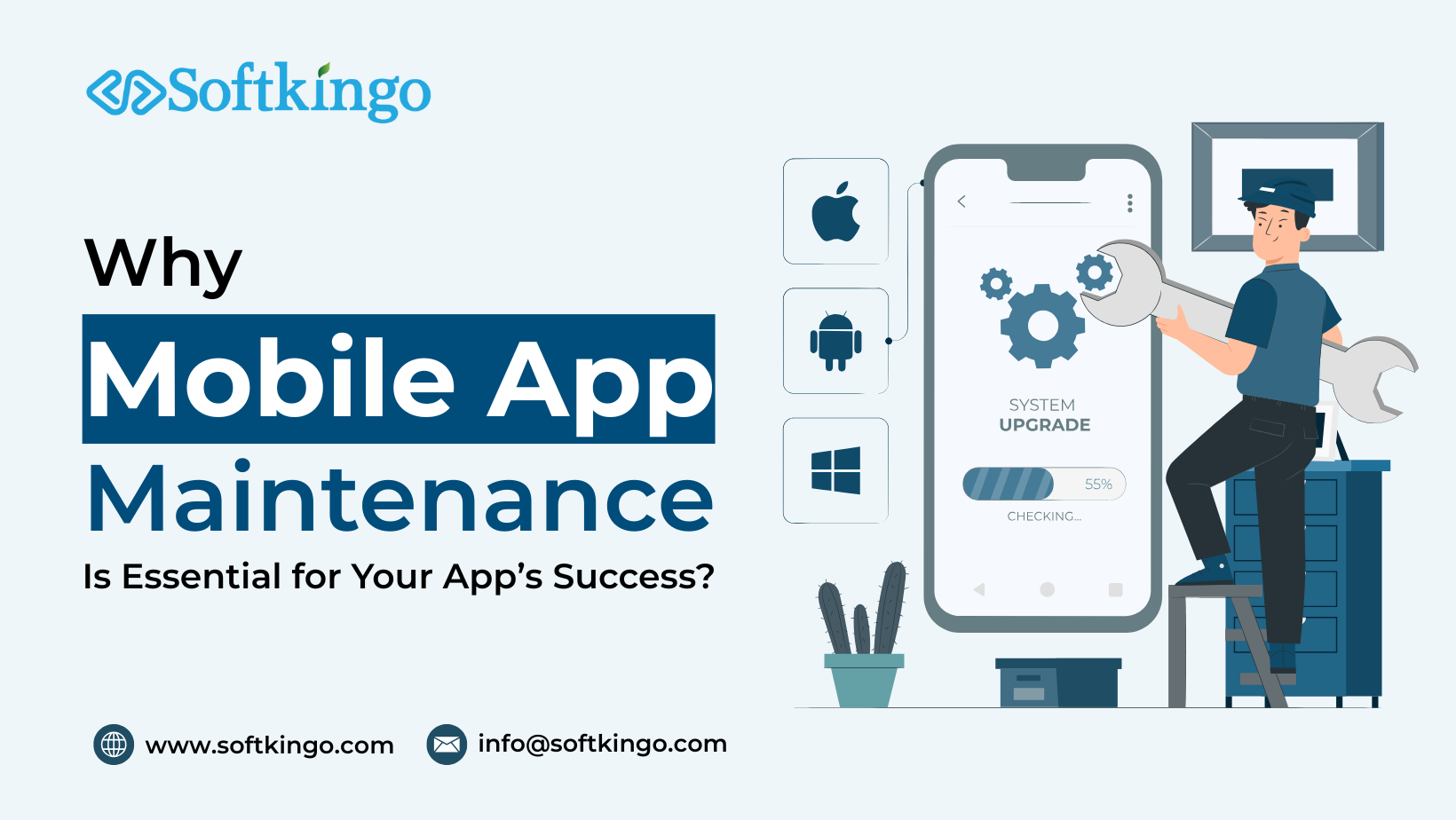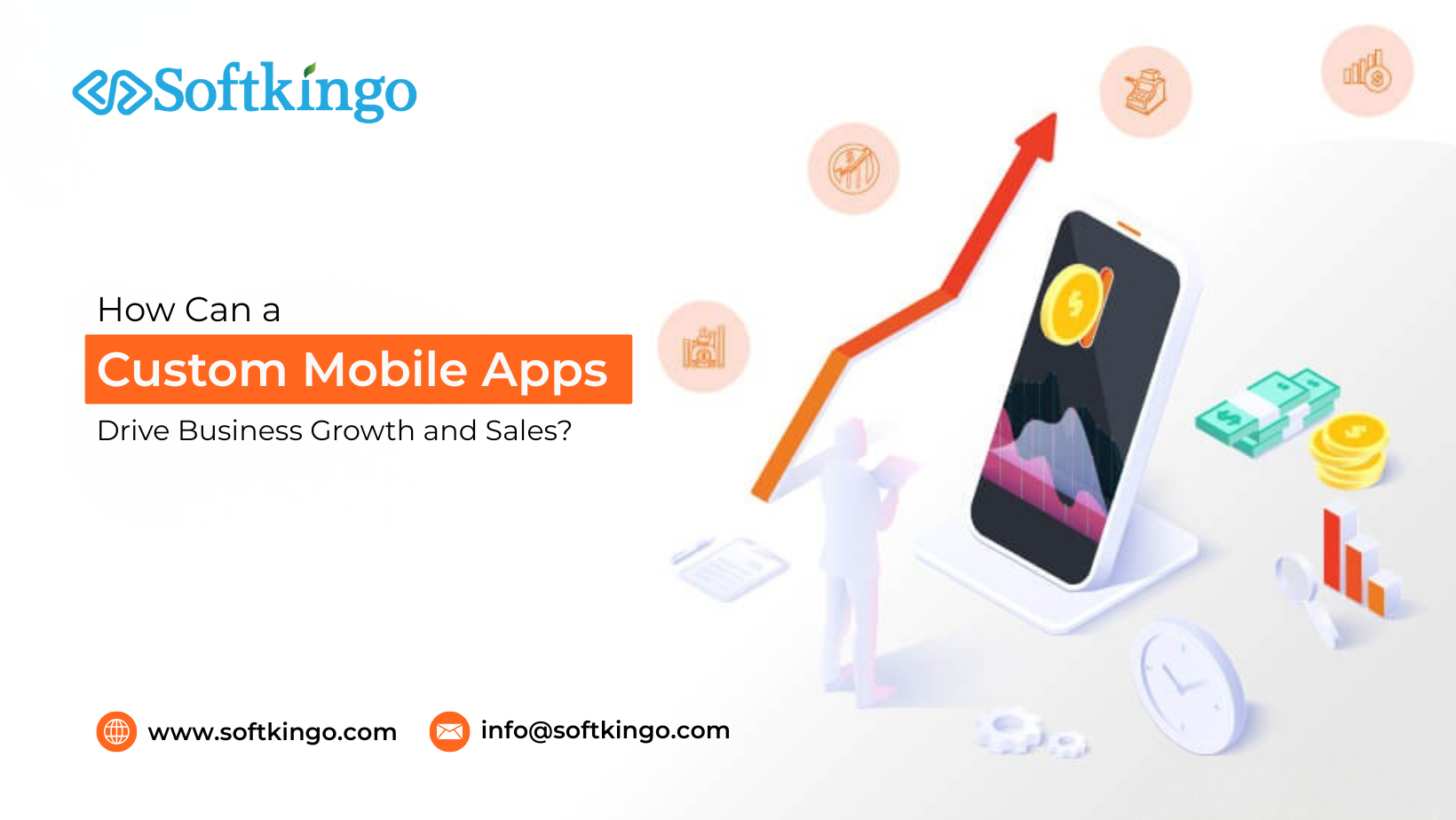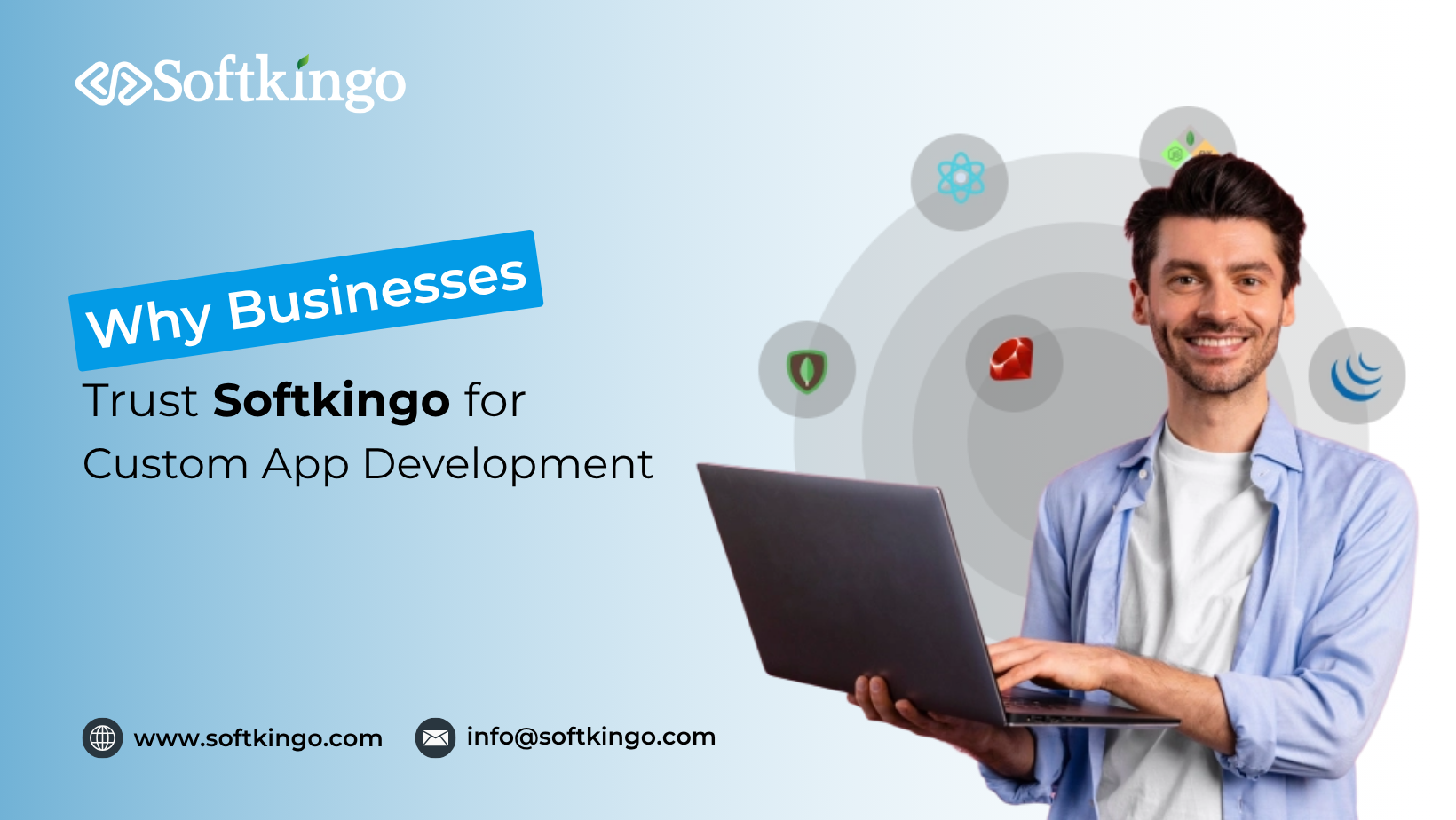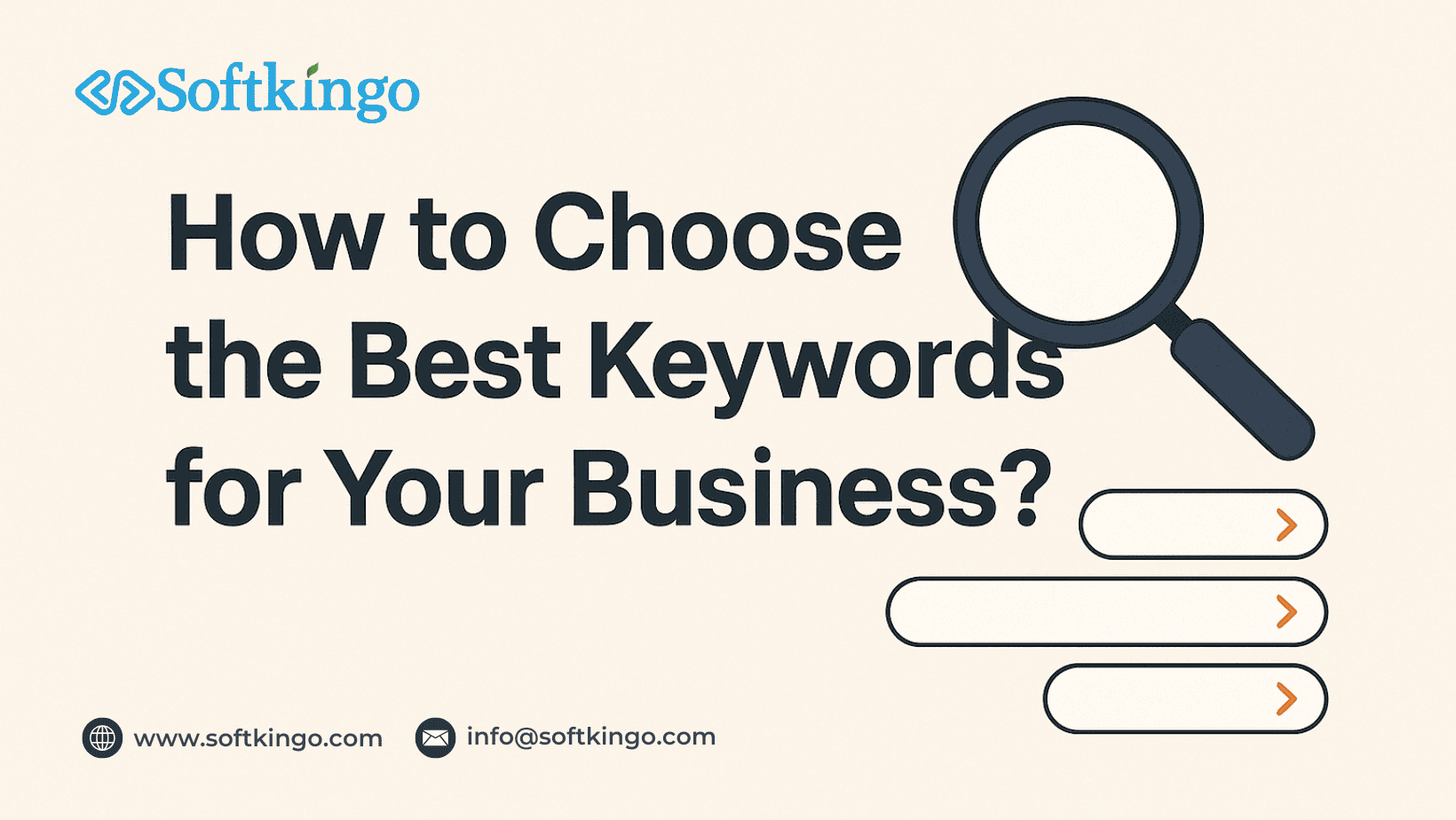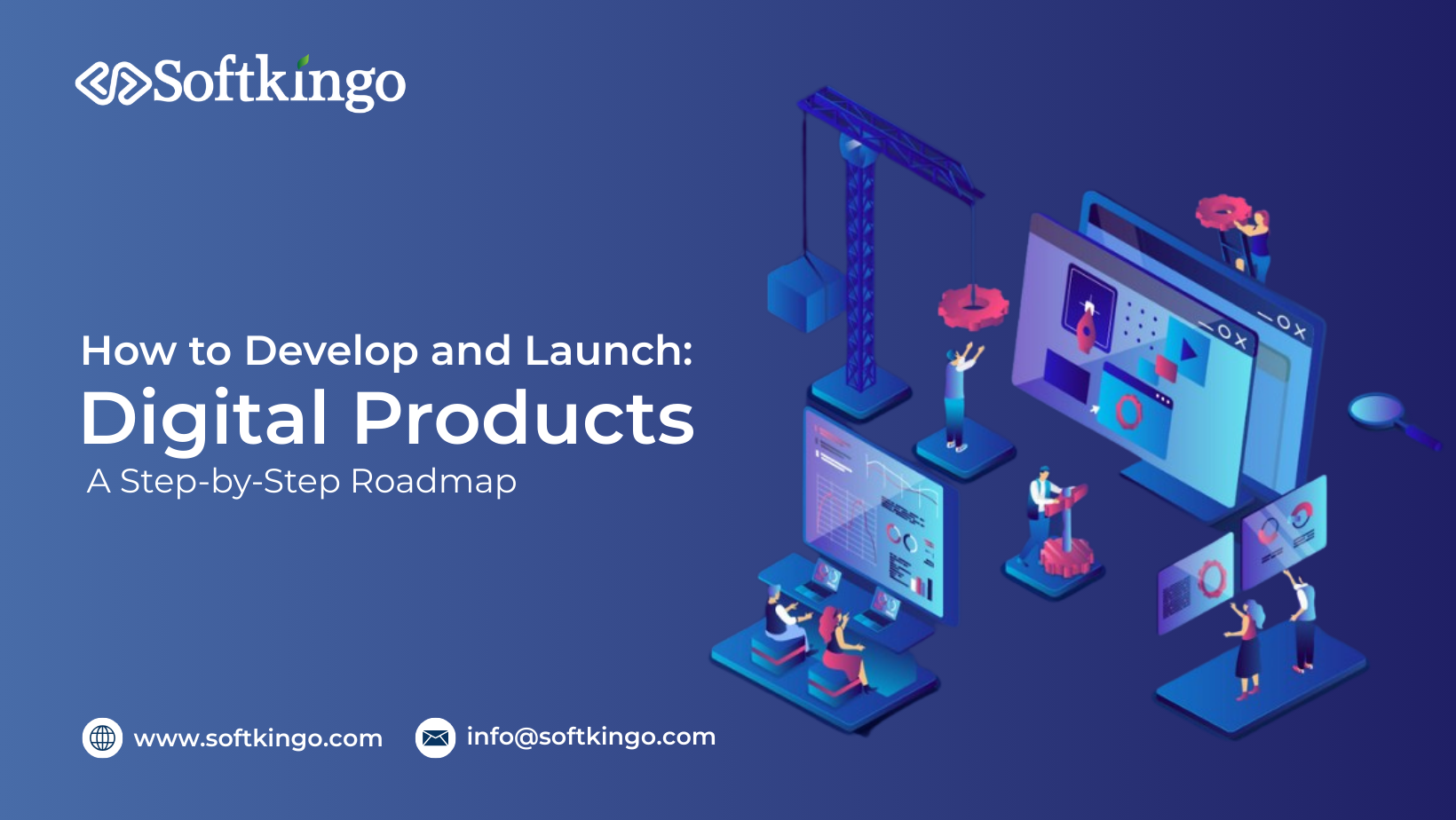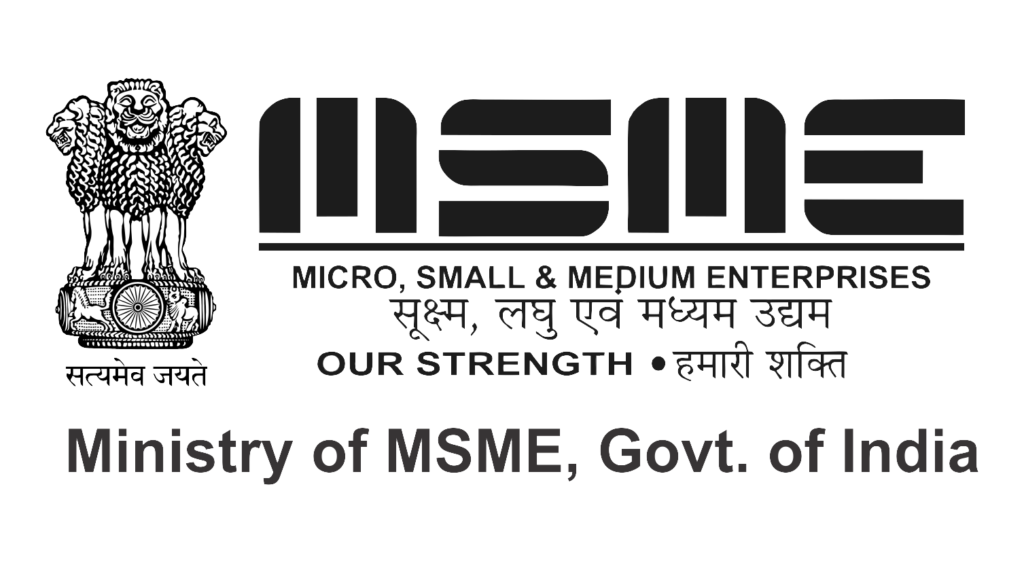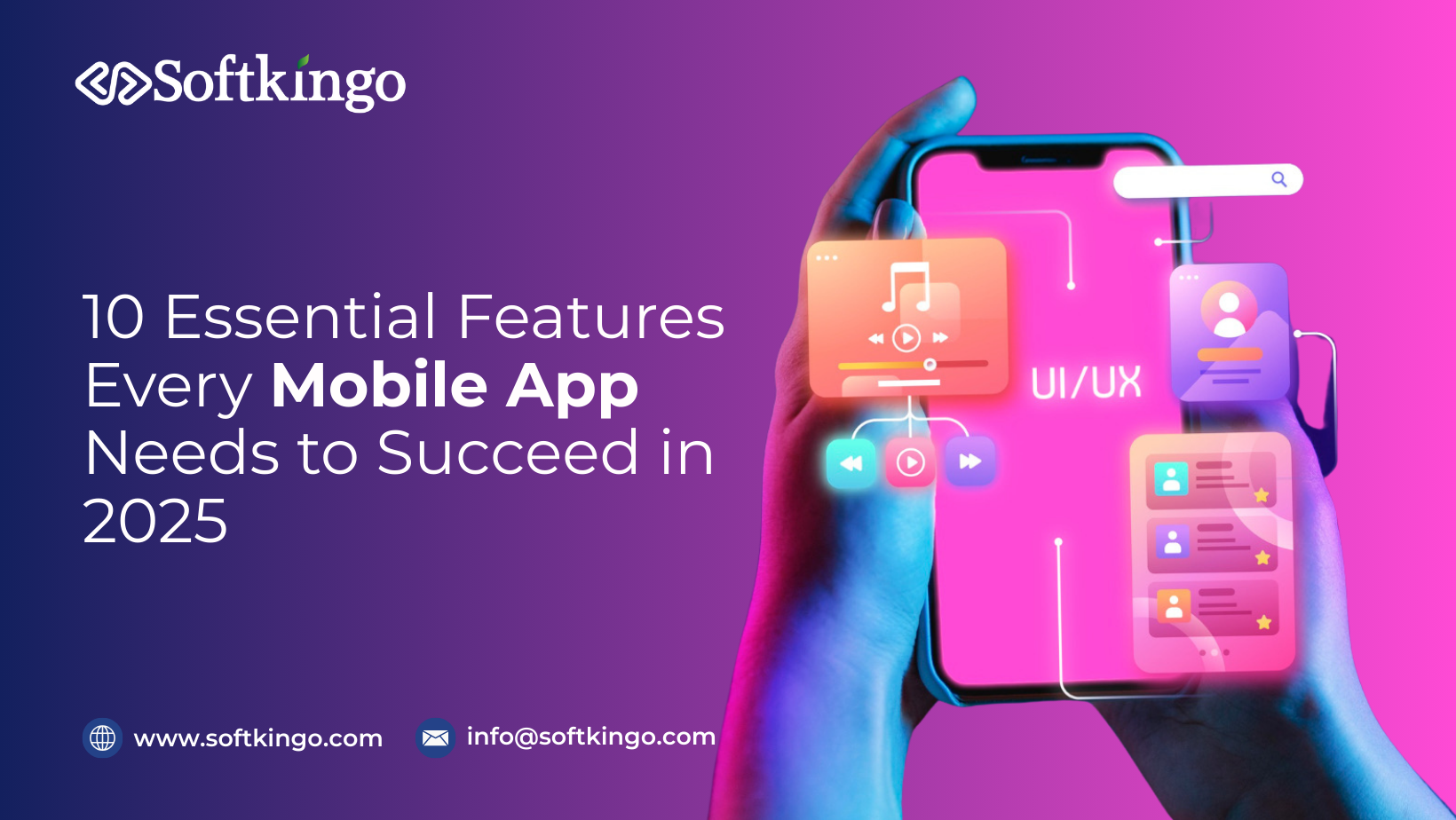
If you’re planning to launch a mobile app in the new year, it’s not enough to just have a unique idea. You need to focus on the features that really resonate with today’s users. People want apps that are easy to use, feel safe, and fit into their daily lives. Getting those right can help you grab more downloads, keep users engaged, and make your app a long-term success.
In this post, we’ll walk through the 10 features every mobile app needs to be successful in 2025. From using AI to create smarter, more personalized experiences to making sure your users’ data is safe, these tips will help you design an app that users love and keeps ahead of the competition. Let’s dive in!
10 Features Every Mobile App Needs in 2025
Whether you’re creating an app from scratch or giving an old one a refresh, here are 10 features you absolutely should include. First up, let’s talk about a smooth user experience, starting with seamless UI/UX.
1. Seamless User Interface (UI) and Experience (UX)
A smooth and easy-to-navigate design is the heart of any successful mobile app. If users can’t figure out how to use your app or get lost in it, they’re not coming back. Research shows that 88% of users will bail on an app after a bad experience, which is why getting the design right is so important.
The goal is to keep things simple. Avoid clutter, and make sure it’s easy for users to find what they need. A clean, intuitive layout with consistent colors, fonts, and icons will help guide people through the app without confusion. Also, make sure the app flows smoothly—users should be able to move from one screen to another without any hiccups.
One great way to make sure your design works? Test it out with real people. See how they use your app, where they struggle, and where they seem to enjoy it. Tools like Figma or Adobe XD are fantastic for designing and testing your ideas before you start building. A great UI/UX doesn’t just make your app easy to use—it’ll also help you get those good reviews, keep people coming back, and stand out in a crowded market.
2. Personalization and Predictive Analytics
One of the biggest trends right now is using AI to personalize the user experience. By tracking what people do in your app, you can make suggestions or changes that feel customized just for them. A study by Salesforce showed that 65% of people expect personalized experiences from brands, so if you’re not offering this, you might be missing out.
Think about how apps like Spotify or Netflix do it. Spotify’s “Discover Weekly” playlist is based on your listening habits, and Netflix suggests shows it thinks you’ll love based on what you’ve already watched. These personalized touches keep users engaged and coming back for more.
To make this happen in your app, start by collecting data about users—what they like, what they do, and how they interact with the app. Then, use AI to analyze that data and offer them content or features they might enjoy. Be transparent about this data collection and make sure users know what you’re doing with it—it helps build trust.
Personalizing the experience isn’t just about making users feel special. It’s about making them feel like your app was built just for them. When you get personalization right, your app becomes something they’ll use daily—something they can’t live without.
3. Biometric Authentication
Let’s be honest—nobody likes remembering passwords. And between data breaches and endless login screens, it’s no surprise that more and more apps are switching to biometric authentication. Things like fingerprint scans and face recognition are now the go-to for logging in quickly and securely.
In fact, about 81% of smartphone users worldwide already use biometrics on their phones. That’s a huge shift—and one your app should be ready for.
Why? Because it builds trust. Biometrics are unique to each person, which makes them much harder to hack than a password. Plus, a lot of biometric systems store the data locally on your phone, not in the cloud—meaning your information isn’t just secure, it’s private.
Apps like PayPal and Google Pay already use this technology to protect payments—and let’s be real, if someone’s trusting your app with their money, or personal health data, or even shopping info, you’ve got to show them you take their privacy seriously.
Just make sure your app supports common biometric options (like Face ID or fingerprint), and always ask for permission upfront. It’s not just about safety—it’s about showing users you’ve got their back.
4. Dark Mode & Theme Customization
Dark mode isn’t just a vibe anymore—it’s a feature people genuinely expect. Whether it’s easier on the eyes at night or helps save battery on OLED screens, many users switch to dark mode as soon as they download an app.
But why stop there? Giving users the option to customize the look and feel of your app—like choosing their favorite colors, font sizes, or overall themes—can really boost how connected they feel to your product.
Look at apps like Slack or Twitter. They don’t just give you a light/dark toggle; they let you pick colors that match your mood or brand. That small sense of control actually makes a big difference in how people engage with the app.
The trick is to design your app in a way that works well with any theme. And if you can, hook into system-level settings so your app can automatically match the user’s preferences.
When people can personalize their experience, they stick around longer. It’s just that simple.
5. Cross-Platform Compatibility
Your users are on all kinds of devices—iPhones, Androids, tablets, foldables, smartwatches, you name it. So, building an app that runs smoothly across all platforms isn’t a “nice-to-have” anymore—it’s a must.
Supporting both iOS and Android is step one. But with tech evolving so fast, you’ve also got to think ahead—things like foldable phones and wearable devices are becoming more common. If your app doesn’t work well on them, that’s a missed opportunity.
Luckily, tools like Flutter or React Native make this much easier. You can build one codebase that runs on multiple platforms, which saves time, money, and a ton of headaches. Big players like Google Ads and Alibaba already use these frameworks to make sure their apps work great, no matter the device.
Bottom line: the more devices you support, the more users you can reach—and keep.
6. Push Notifications & In-App Messaging
We’ve all been there: getting bombarded by notifications that don’t mean anything to us. It’s annoying—and honestly, it’s one of the fastest ways to make someone uninstall your app.
But when push notifications are timely, relevant, and maybe even a little fun? That’s when the magic happens. Studies show that smart, personalized push messages can boost engagement by up to 80%.
Apps like Duolingo do this perfectly. Miss a lesson? You’ll get a gentle nudge that sounds more like encouragement than pressure. Amazon does it too—reminding you about things in your cart or letting you know about a price drop on something you liked.
In-app messages can also be a great way to guide users or announce new features without being intrusive. Welcome messages, how-to tips, or feature highlights make the experience smoother and more helpful.
Want to do it right? Segment your users. Tailor your messages based on what they do, where they are, or what they care about. Tools like Firebase or OneSignal can help with this. And always give users the option to control their notification preferences—that’s just good manners.
7. Generative AI: Smart Features That Actually Help
Generative AI isn’t just a buzzword anymore—it’s changing the way apps work. Instead of just reacting to users, apps can now predict, suggest, and even create things in real-time.
Think of AI that writes personalized product recommendations, crafts your workout plan, or answers support questions instantly. Chatbots powered by tools like GPT or Dialogflow are doing this already, offering human-like help 24/7.
Apps like Snapchat use AI for fun, creating personalized filters and AR effects. Meanwhile, Headspace uses it to recommend meditations based on your mood.
And it’s not just about the user side. Generative AI can help behind the scenes too—like writing product descriptions, summaries, or customer emails automatically. That’s a huge time-saver.
Just be smart about how you use it. Focus on places where AI can actually make the experience better. And always be transparent about how you’re using data—it builds trust and shows you’re playing fair.
8. Using Native Device Features: Make It Feel Natural
You know what makes an app feel really powerful? When it works with your device, not against it.
Things like GPS, camera access, motion sensors, or AR can take your app to the next level. Think of how Uber uses GPS to find your location, or how IKEA Place lets you see furniture in your home using AR. That kind of native integration creates moments that feel magical.
Fitness apps like Fitbit use built-in sensors to track your steps or workouts. Smart home apps use local device data to control lights, thermostats, and more.
But—this part’s important—privacy matters. Always ask for permission, be clear about why you need access, and follow the rules (like GDPR and CCPA). When users feel safe, they’re way more likely to trust and use your app regularly.
9. Regular Updates & Bug Fixes: Keep It Fresh (and Working!)
Nobody wants to use an app that feels outdated or buggy. Regular updates aren’t just for fixing things—they show your users you care, you’re listening, and you’re committed to improving.
Apps that get frequent updates actually have higher retention rates than those that don’t. It makes sense—people stick around when they feel heard and when the experience gets better over time.
Use analytics tools or in-app surveys to gather feedback. Are people asking for a feature? Complaining about a bug? Use that input to guide your next update. Apps like WhatsApp are great at this—they regularly release updates that fix issues and add new, user-requested features.
Just make sure to test everything before you roll it out, and include clear release notes so people know what’s new. Updates aren’t just maintenance—they’re part of the user experience.
10. Strong Data Security: Trust Is Everything
With everything we do on our phones now—from banking to booking doctor’s appointments—data security is non-negotiable. Users need to know their personal info is safe in your hands.
Start with the basics: end-to-end encryption, secure APIs, regular security audits. Then go a step further. Offer things like two-factor authentication (2FA) and biometric logins. Apps that do this well build trust—and keep it.
Remember the Facebook data breach in 2021? Over 500 million users had their info exposed. It’s a reminder of how serious this stuff is. And it’s not just about avoiding fines—it’s about your app’s reputation.
Be upfront about what data you collect and why. Let users manage their privacy settings. When people feel like they’re in control, they’re more likely to stick around.
Final Thoughts
At the end of the day, building a great app in 2025 is about more than just cool features. It’s about understanding your users—what they want, what they care about, and how they live their digital lives.
Whether it’s adding personalized AI, making logins easier with biometrics, or simply letting users choose their favorite color theme, these little things add up. They show users you’re paying attention—and that your app is built with them in mind.
Stay curious. Keep improving. And don’t forget that behind every download is a real person, looking for an experience that makes their life just a little bit better.
Paramhans Singh is the CEO and founder of Softkingo Technologies, bringing over 8 years of experience in delivering custom software solutions that help startups and enterprises achieve their business goals. He has successfully validated more than 220 app and website ideas and delivered over 100 tailored solutions, utilizing a range of technologies such as Swift, Kotlin, React Native, Flutter, PHP, RoR, IoT, AI, NFC, AR/VR, Blockchain, and NFTs.



